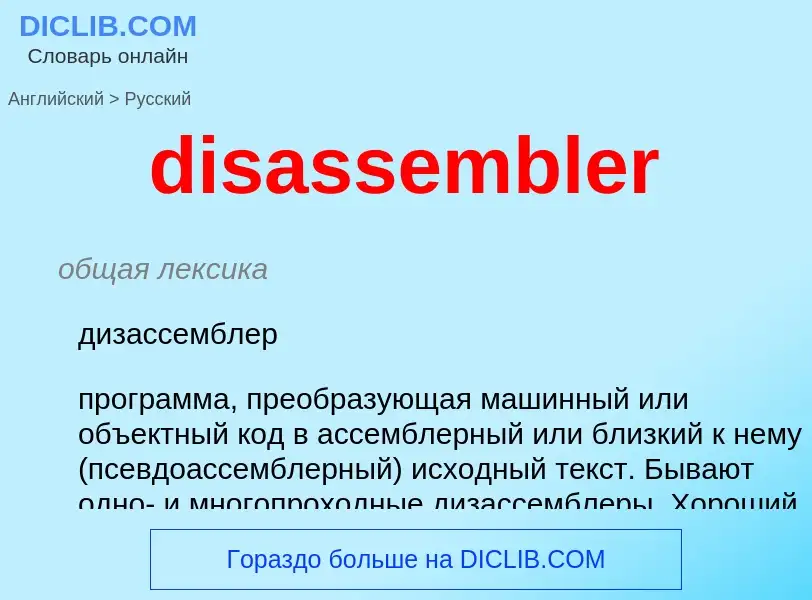Translation and analysis of words by ChatGPT artificial intelligence
On this page you can get a detailed analysis of a word or phrase, produced by the best artificial intelligence technology to date:
- how the word is used
- frequency of use
- it is used more often in oral or written speech
- word translation options
- usage examples (several phrases with translation)
- etymology
disassembler - translation to russian
общая лексика
дизассемблер
программа, преобразующая машинный или объектный код в ассемблерный или близкий к нему (псевдоассемблерный) исходный текст. Бывают одно- и многопроходные дизассемблеры. Хороший дизассемблер позволяет программисту задавать адресам собственные имена. Используются для разбора программ, их взлома или изучения используемых алгоритмов, нахождения точек входа, сообщений (при локализации) и т.п., а также как элемент отладочного монитора или отладочной системы
разборщик
Смотрите также
[disə'sembli]
общая лексика
демонтаж
разборка
расшахтовка
существительное
техника
разборка
демонтаж
Wikipedia
A disassembler is a computer program that translates machine language into assembly language—the inverse operation to that of an assembler. Disassembly, the output of a disassembler, is often formatted for human-readability rather than suitability for input to an assembler, making it principally a reverse-engineering tool. Common uses of disassemblers include recovering source code of a program whose original source was lost, malware analysis, modifying software (such as ROM hacking), and software cracking.
A disassembler differs from a decompiler, which targets a high-level language rather than an assembly language.
Assembly language source code generally permits the use of constants and programmer comments. These are usually removed from the assembled machine code by the assembler. If so, a disassembler operating on the machine code would produce disassembly lacking these constants and comments; the disassembled output becomes more difficult for a human to interpret than the original annotated source code. Some disassemblers provide a built-in code commenting feature where the generated output gets enriched with comments regarding called API functions or parameters of called functions. Some disassemblers make use of the symbolic debugging information present in object files such as ELF. For example, IDA allows the human user to make up mnemonic symbols for values or regions of code in an interactive session: human insight applied to the disassembly process often parallels human creativity in the code writing process.

